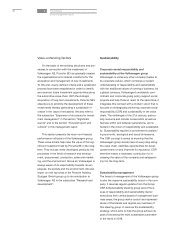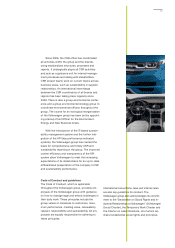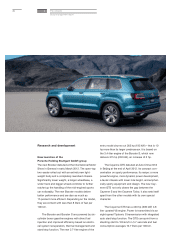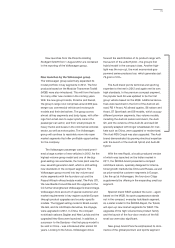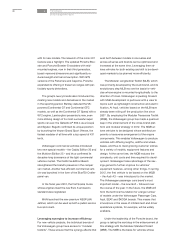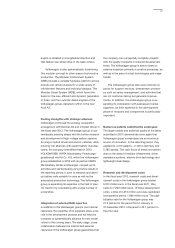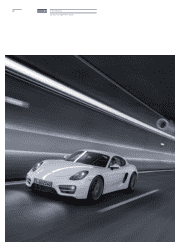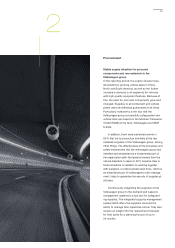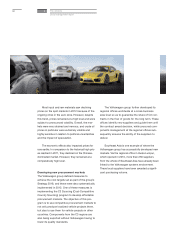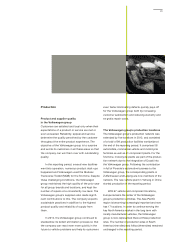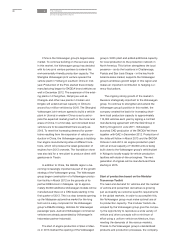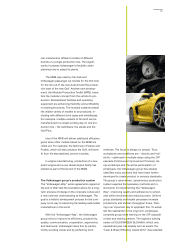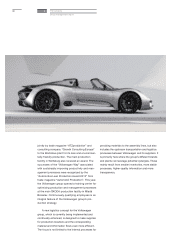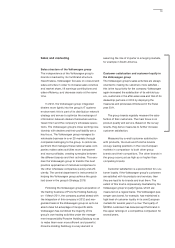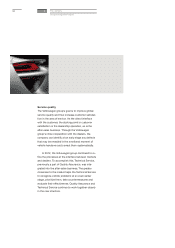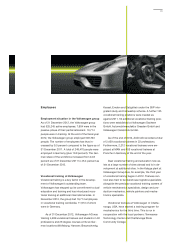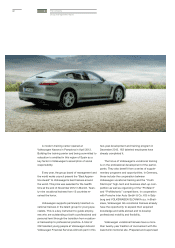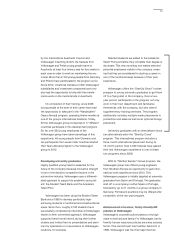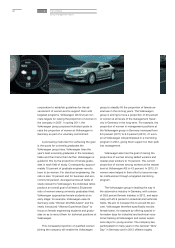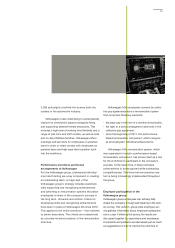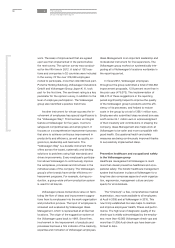Porsche 2012 Annual Report Download - page 90
Download and view the complete annual report
Please find page 90 of the 2012 Porsche annual report below. You can navigate through the pages in the report by either clicking on the pages listed below, or by using the keyword search tool below to find specific information within the annual report.
China is the Volkswagen group’s largest sales
market. To continue building on the success story
in this market, the Volkswagen group has decided
with its two joint venture partners to extend the
environmentally-friendly production capacity. The
Shanghai Volkswagen joint venture opened the
vehicle plant in Yizheng in southern China in mid-
year. Production of the Polo started there initially;
manufacturing began for ŠKODA brand vehicles as
well in December 2012. The expansion of the exist-
ing plants in Changchun, Nanjing as well as
Chengdu and other new plants in Foshan and
Ningbo will extend annual capacity in China to
around four million vehicles by 2018. The Shanghai
Volkswagen joint venture agreed to build a vehicle
plant in Urumqi in western China so as to antici-
pate the expected market growth in the more rural
areas of China. In a first step, semi-knocked down
vehicles are to be assembled there as early as
2013. To meet the increasing demand for power-
trains resulting from the expansion of vehicle pro-
duction in China, the Volkswagen group is building
four engine manufacturing sites at different loca-
tions, which will produce the latest generation of
engines from 2013 onwards. The foundation stone
was also laid for a new plant to produce direct shift
gearboxes in Tianjin.
In addition to China, the ASEAN region is be-
coming increasingly important as part of the growth
strategy of the Volkswagen group. The Volkswagen
group began construction of a Volkswagen produc-
tion facility in March 2012 on the grounds of its
partner DRB-Hicom in Malaysia. Up to approxi-
mately 30,000 additional Volkswagen models will be
manufactured there on a CKD basis starting in the
first quarter of 2013. This is a step towards opening
up the Malaysian automotive market for the long
term and is a key component in the Volkswagen
group’s ASEAN strategy. Vehicles for Volkswagen
passenger pars, Audi and Volkswagen commercial
vehicles are already assembled by Volkswagen’s
Indonesian partner Indomobil.
The start of engine production in Silao in Mexi-
co in 2013 marked the opening of the Volkswagen
group’s 100th plant and added additional capacity
for local production to the production network in
North America. This further strengthens the local
presence – as do the locations in Chattanooga,
Puebla and San José Chiapa – in the key North
America sales market, supports the Volkswagen
group’s ambitious growth target in this region and
makes an important contribution to hedging cur-
rency fluctuations.
The ongoing strong growth of the market in
Russia is strategically important to the Volkswagen
group. To continue to strengthen and extend the
Volkswagen group’s position in this market, the
company created the basis for increasing short-
term local production capacity to approximately
110,000 vehicles each year by signing a contract
manufacturing agreement with the GAZ Group in
Nizhny Novgorod in June 2011. Volkswagen
launched CKD production of the ŠKODA Yeti there
together with GAZ in December 2012. Production of
the Jetta will follow in March 2013 and the ŠKODA
Octavia in mid-2013. An engine production plant
with an annual capacity of 150,000 units is being
built close to the Volkswagen group’s vehicle plant
in Kaluga to locally supply its vehicle production
facilities with state-of-the-art engines. The next
generation of engines will be manufactured there
starting in 2015.
Start of production based on the Modular
Transverse Toolkit
The need and demand for vehicles and the number
of vehicle and powertrain derivatives is growing
just as steadily as customer-specific requirements
in the global markets. In order to accomplish this,
the Volkswagen group must make optimal use of
its production capacity. The modular toolkits de-
veloped by the Volkswagen group give the compa-
ny the opportunity to reproduce a wide variety of
vehicle and drive concepts with a minimum of
effort using a uniform vehicle architecture, thus
meeting the demands of the various markets.
Thanks to the Volkswagen group’s standardized
products and production processes, the company
2The company
Group management report
286


